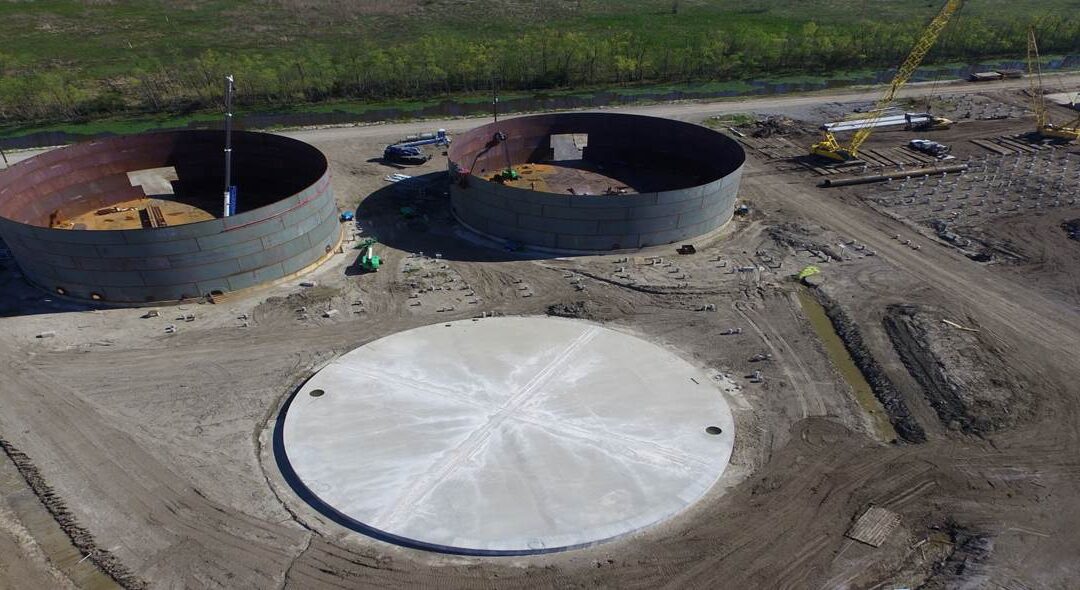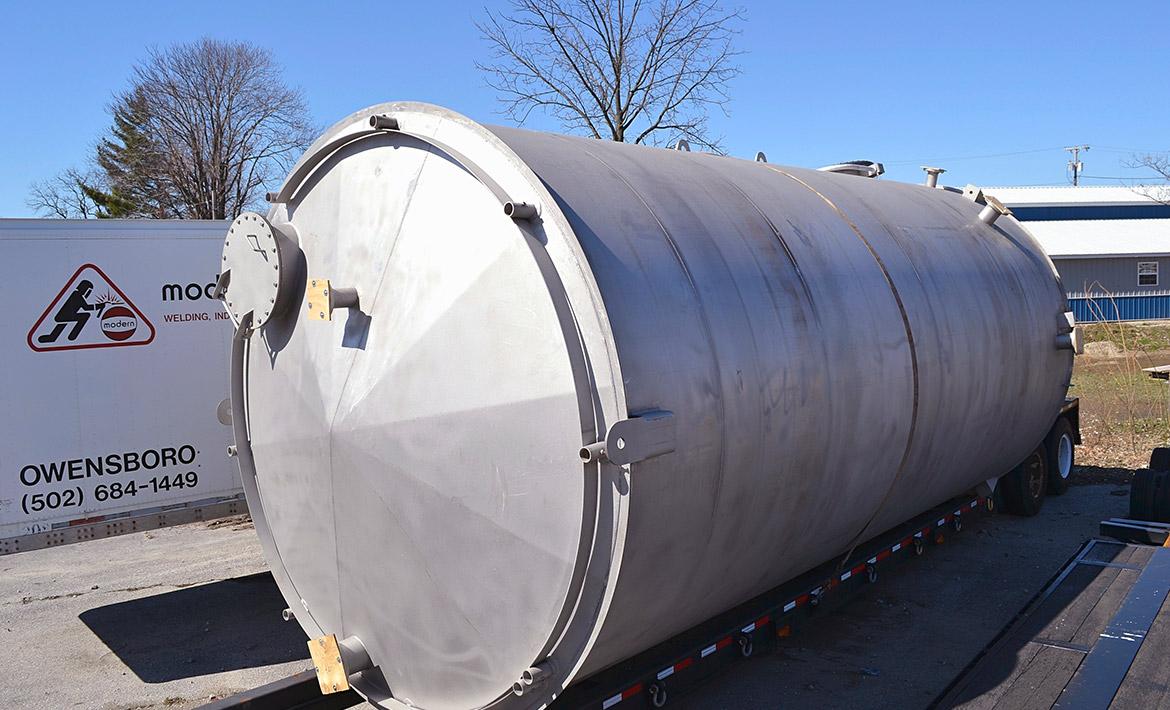The Future of API 650 Welding Inspection with Cutting-Edge Digital Methods Integration
Wiki Article
Exactly How Welding Examination Works: A Comprehensive Overview for Professionals
Welding assessment plays an essential function in making certain the security and reliability of welded structures. It entails an organized method that consists of both aesthetic examination and advanced screening methods. Professionals should acquaint themselves with essential standards and laws regulating the market. Comprehending the usual problems that can occur during welding is essential. This overview will check out these components carefully, providing insights into the procedures that copyright high quality and stability in welding.Recognizing the Relevance of Welding Evaluation
While lots of may ignore the significance of welding examination, it plays a necessary duty in ensuring the honesty and safety and security of bonded structures. Reliable welding inspection recognizes prospective problems and problems that can compromise structural strength and cause catastrophic failures. The inspection process encompasses numerous strategies, such as aesthetic evaluations, ultrasonic screening, and radiographic assessments, each contributing to the general analysis of weld quality.
In addition to safeguarding the structural integrity, welding assessment ensures conformity with sector standards and client specifications. By ensuring that welds fulfill required tolerances and attributes, examinations assist preserve the dependability and durability of parts in numerous applications, from building and construction to aerospace. A rigorous evaluation process fosters a society of high quality and accountability amongst producers and welders. Eventually, welding evaluation is not simply a step-by-step action; it is a crucial technique that underpins the safety and efficiency of engineered systems throughout varied sectors.
Secret Specifications and Regulations in Welding Evaluation
The structure of reliable welding inspection hinges on adherence to developed standards and regulations. Different companies, such as the American Welding Culture (AWS) and the American National Criteria Institute (ANSI), set forth standards that assure quality and safety in welding practices. Secret requirements, such as AWS D1.1 for architectural welding and ASME Area IX for pressure vessels, offer detailed requirements for welding treatments, credentials, and inspections. Governing structures, including those from the Occupational Security and Health And Wellness Administration (OSHA), required security techniques and worker securities in welding atmospheres. Compliance with these requirements is vital for attaining regular weld high quality and lessening the danger of failings. In addition, global criteria like ISO 3834 better boost global uniformity in welding inspection methods. Specialists must stay informed regarding these guidelines to assure that their inspection approaches straighten with industry assumptions and legal demands, thereby securing both personnel and structural honesty.Initial Preparation and Aesthetic Examination Techniques

Reliable welding inspection begins with a complete pre-inspection checklist that guarantees all essential conditions are fulfilled before the real assessment takes area. Following this prep work, aesthetic issue recognition plays an important duty in assessing weld top quality, permitting examiners to identify concerns such as fractures or inappropriate combination. Together, these strategies develop the foundation for an effective welding assessment process.
Pre-Inspection List
Prior to starting any type of welding assessment, a thorough pre-inspection list is necessary to assure that all essential prep work are finished and that aesthetic evaluation techniques are properly employed. Crucial element of this checklist include verifying the welding treatment specification (WPS), making certain all tools is adjusted and in excellent functioning problem, and verifying that the examiner possesses the required accreditations. In addition, it is important to examine any kind of previous assessment reports and to analyze the work atmosphere for safety risks. The inspector should additionally confirm that all appropriate documentation, such as material certificates and examination records, is readily available. Completing this list aids to establish a solid structure for a successful examination process, enhancing the reliability of the results acquired.Visual Defect Identification
An effective visual flaw identification procedure starts with cautious initial preparation and the application of established visual inspection strategies. Inspectors should guarantee why not find out more that the welding area is well-lit and clean, as sufficient exposure is vital for identifying issues. A complete evaluation of the weld joint's surface area enables the identification of interruptions, such as splits, undercuts, or porosity. Examiners usually make use of tools like magnifying glasses or mirrors to boost their sight of hard-to-reach locations. In addition, they ought to be familiar with the details welding requirements and standards appropriate to the task. By sticking to these techniques, inspectors can successfully determine potential problems, protecting the integrity of the weld and conformity with industry criteria.Non-Destructive Testing Techniques: A Summary
Non-destructive testing (NDT) methods play a necessary function in the welding examination process by guaranteeing the integrity and see this website reliability of welded structures without creating any type of damage (API 650 Welding Inspection). These techniques permit assessors to evaluate the quality of welds while preserving the elements being examined. Common NDT techniques consist of ultrasonic screening, radiographic screening, magnetic fragment testing, and color penetrant testing, each offering one-of-a-kind benefitsUltrasonic testing utilizes high-frequency acoustic waves to spot interior problems, while radiographic testing makes use of X-rays or gamma rays to visualize the inner structure of welds. Magnetic particle screening discloses surface and near-surface problems by using a magnetic field and iron particles to the weld area. Color penetrant screening highlights surface-breaking imperfections through the application of a colored dye. With each other, these NDT methods provide critical understandings right into weld quality, allowing experts to make informed decisions regarding safety and security and compliance in welding applications.
Typical Issues and Their Effects
Recognizing common issues in bonded joints is crucial for keeping architectural integrity and safety. Different flaws can emerge throughout the welding process, each bring potential effects for the overall performance of the framework. Porosity, defined by tiny gas pockets within the weld, can weaken the joint and compromise its load-bearing capacity. Fractures may create because of thermal stress or improper air conditioning, causing potential failing under stress. Incomplete blend takes place when the weld steel does not completely bond with the base product, resulting in weak joints that might not hold up against desired tons. Damaging, where the base metal is deteriorated, can additionally minimize the effective cross-section you could check here of the weld. Additionally, excessive support can create tension focus that might lead to failing. Identifying these defects immediately allows for rehabilitative procedures, making sure the durability and integrity of bonded frameworks in essential applications.Tools and Equipment Utilized in Welding Inspection
Reliable welding examination counts on a variety of specialized tools and equipment to ensure the top quality and honesty of welded joints. Important tools consist of visual evaluation tools, such as amplifying borescopes and glasses, which permit assessors to carefully examine welds for surface problems. Non-destructive screening (NDT) methods, such as ultrasonic screening, radiographic screening, and magnetic fragment testing, are basic for identifying internal imperfections without harming the product.Dimension tools, consisting of calipers and weld assesses, help evaluate measurements and identify conformity with requirements. In addition, solidity testers evaluate the mechanical properties of welded joints. Individual protective devices (PPE) is likewise critical, securing the safety of assessors while operating in possibly dangerous settings (API 650 Welding Inspection). Each tool offers a particular purpose, jointly enhancing the efficiency of welding inspection and adding to the dependability of completed tasks
Regularly Asked Questions
What Certifications Are Required to End Up Being a Welding Assessor?
To become a welding assessor, individuals typically require pertinent qualifications, such as AWS CWI or CSWIP, together with experience in welding processes, design concepts, and knowledge of inspection techniques, security requirements, and relevant codes.Just How Typically Should Welding Inspections Be Performed?
Welding inspections need to be carried out regularly, preferably at various job phases, including pre-weld, during-weld, and post-weld. Frequency may additionally depend upon market requirements, project requirements, and the complexity of the welds entailed.Can Welding Defects Be Fixed After Examination?

Yes, welding problems can often be repaired after inspection. Depending on the severity and kind of problem, appropriate techniques such as reworking or additional welding might be used to restore architectural honesty and safety and security conformity.
What Industries Require Normal Welding Assessments?

Various markets, consisting of building and construction, production, aerospace, and auto, require regular welding inspections - API 650 Welding Inspection. These inspections assure adherence to safety and security standards and high quality control, decreasing dangers connected with structural integrity and operational efficiency in bonded components
Exactly how Do I Select a Welding Evaluation Solution?
To select a welding evaluation service, one need to take into consideration qualifications, experience, certifications, and market track record. Additionally, assessing client reviews and guaranteeing the service satisfies appropriate criteria can aid guarantee quality examinations and reputable outcomes.
While lots of may ignore the importance of welding examination, it plays a necessary duty in ensuring the honesty and safety of welded structures. Secret requirements, such as AWS D1.1 for structural welding and ASME Section IX for stress vessels, give comprehensive requirements for welding treatments, credentials, and assessments. Efficient welding inspection starts with a comprehensive pre-inspection list that assures all needed problems are met before the actual evaluation takes location. Prior to commencing any kind of welding examination, a thorough pre-inspection checklist is important to guarantee that all required preparations are finished and that visual assessment strategies are successfully utilized. Non-destructive testing (NDT) techniques play a crucial duty in the welding evaluation procedure by ensuring the integrity and dependability of bonded frameworks without triggering any kind of damage.
Report this wiki page